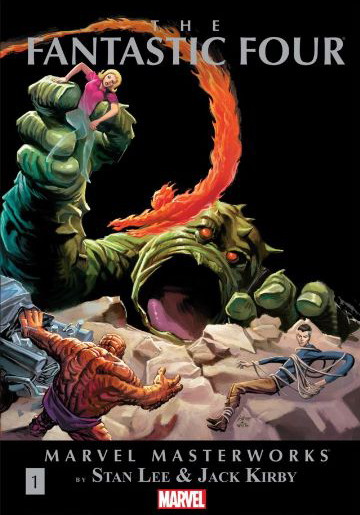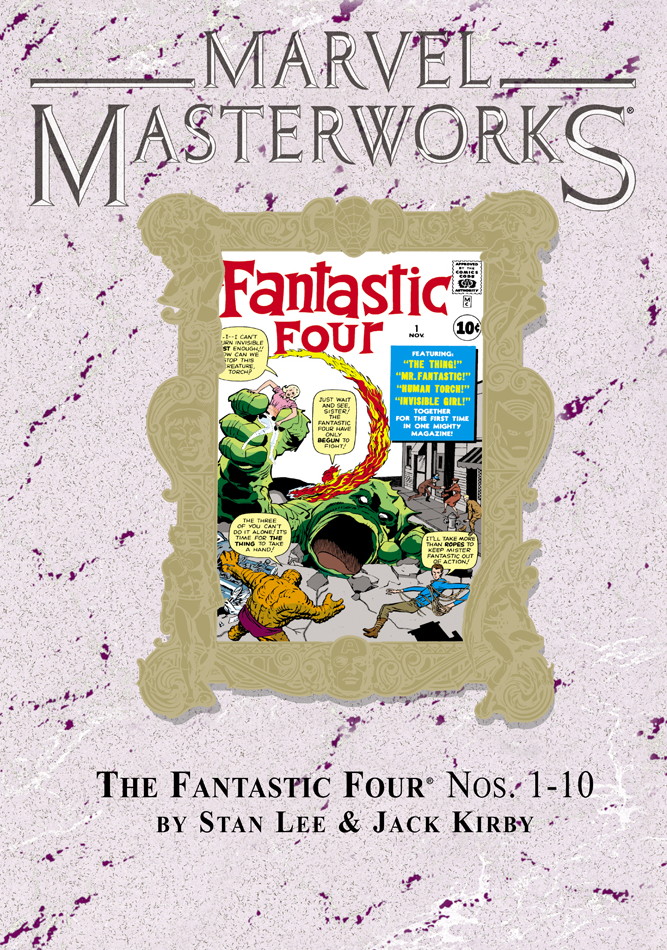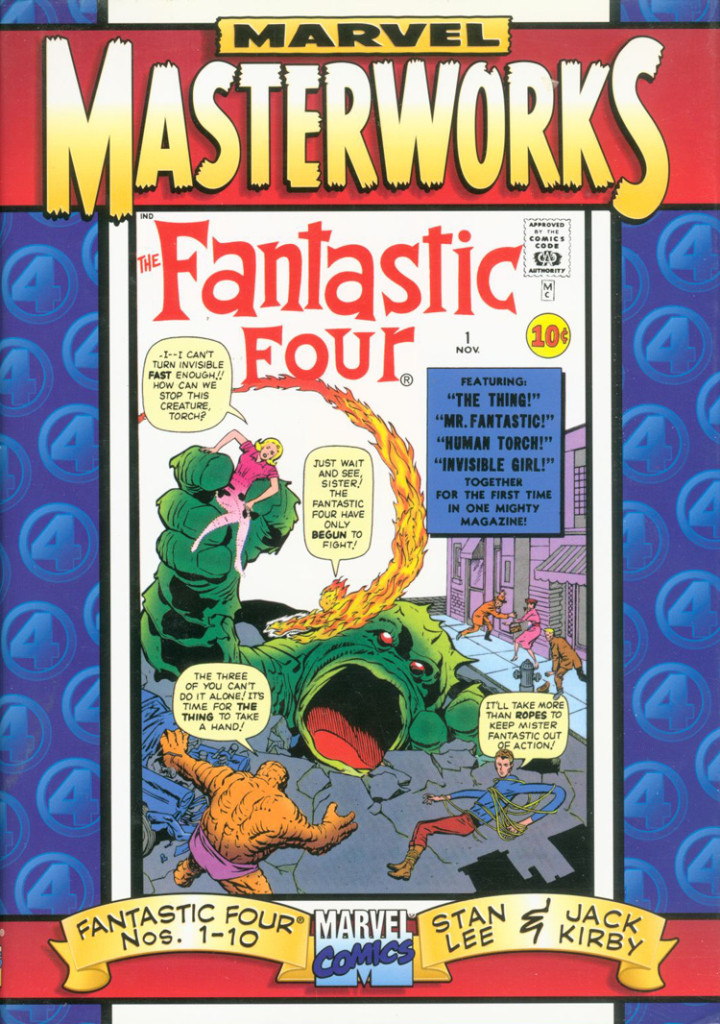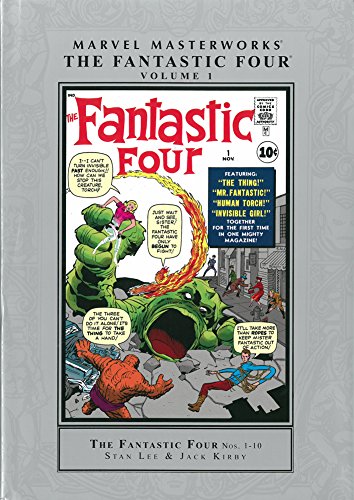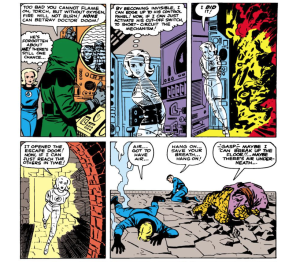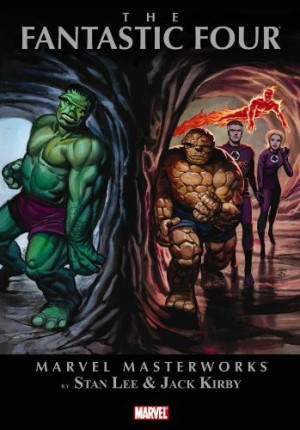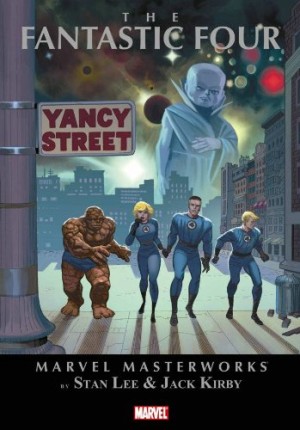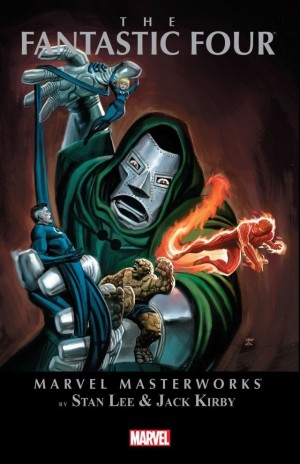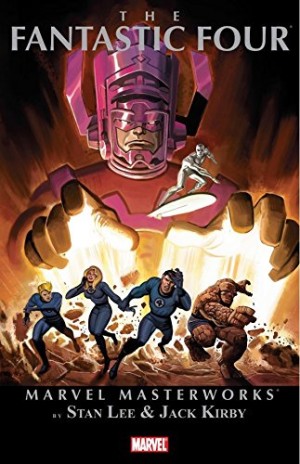Review by Graham Johnstone
These earliest ten issues of Fantastic Four are of vast historical importance as a first venture into superheroes for a decade that turned an ailing comics company into a successful one, and in due course the massive Marvel comics, film and merchandise brand.
However, what Stan Lee and Jack Kirby have created we might now call ‘meta-superheroes’. They are first and foremost fun characters who have adventures, but they are also a knowing commentary on the very idea of superheroes. Lee questions the basic assumptions of the genre, and tries to reinvent it based on observation of real individuals and society. In a small way he was doing what Alan Moore would do twenty-odd years later.
Lee gave his cast personalities. While somewhat one-dimensional, they contrast with most superheroes of the time who were ‘masked’ in every sense, and generally only spoke to progress or explain the plot. He chose powers to reflect those personalities. Excitable teenager Johnny Storm becomes a new version of the 1940s character Human Torch. Scientific genius Reed Richards becomes the malleable Plastic Man–like Mister Fantastic. In almost every situation, he can conceive and physically become the solution. Ben Grimm, the ‘tough guy’ scared of his own vulnerabilities has a stony, armoured exterior as The Thing. He’s like Frankenstein’s creature – a sensitive soul tormented by imprisonment in a monstrous exterior. Sue Storm, as the sole female, gets a passive power of limited use. As Invisible Girl, Sue can escape danger, and unseen increase her odds when fighting tough male adversaries. Today it comes across not as a reflection of personality, but as a socially constructed role, although she does at times show bravery and resourcefulness. Lee must have recognised the limitations, as he would later expand her powers.
Any child reading superhero comics must have wished at times that the heroes would stop hiding behind secret identities and enjoy the glory, and that’s what happens here. The FF are celebrities. How do superheroes afford all their gadgets and secret lairs? The FF can’t and they go bankrupt. They’re even invited to appear in a ‘reality’ movie about themselves.
By the last issue it’s becoming cheekily self-referential. Lee and Kirby are shown discussing plots when Dr. Doom appears at their offices and pressures them to lure Reed Richards to discuss story ideas.
However, the execution is not as innovative as the idea. The Mole Man and his beasts, the shapeshifting alien Skrulls, Kurrgo from Planet X, vengeful magician the Miracle Man, and the grotesque Puppet Master could have been lifted from the company’s earlier monster, horror and supernatural anthologies.
It was Kirby’s dynamic art that sold the stories, and the powers, props and paraphernalia of superheroes would fuel his visual imagination and inspire his best work. We can see glimpses here. By issue five, on a single page we have brilliant depictions of Invisible Girl – translucent against a wall of machinery shielding herself from an explosion behind it. Then she’s running through archways and castle corridors, pressing secret switches to raise metal doors, and so on. Lee and Kirby’s work improved over their decade on the title, but there’s some nice art and most stories have memorable moments.
The colour has been restored to match the bold, flat colours of the originals, although ironically, the better printing and paper can make it too bright and crude.
All the material here is included in volume one of both the larger black and white Essential Fantastic Four, and colour Fantastic Four Omnibus series. Panini editions reprint the same material, but broken down differently between volumes.
